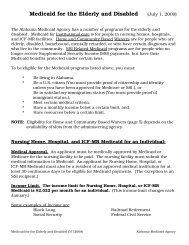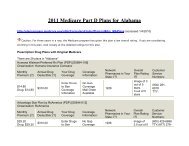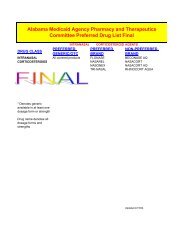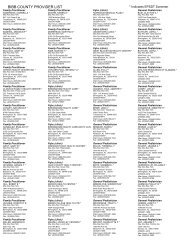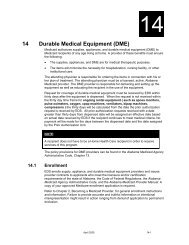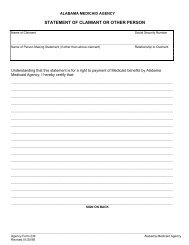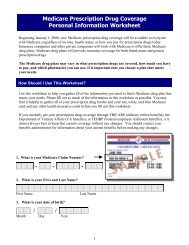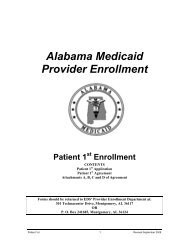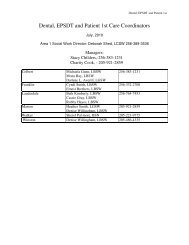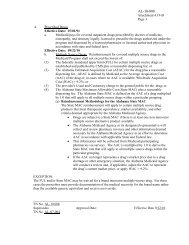PHARMACOTHERAPY REVIEW CNS STIMULANTS for treatment of ...
PHARMACOTHERAPY REVIEW CNS STIMULANTS for treatment of ...
PHARMACOTHERAPY REVIEW CNS STIMULANTS for treatment of ...
You also want an ePaper? Increase the reach of your titles
YUMPU automatically turns print PDFs into web optimized ePapers that Google loves.
E. Dosing <strong>of</strong> <strong>CNS</strong> Stimulants in Management <strong>of</strong> ADHDThe individual response to different doses <strong>of</strong> different stimulants in different delivery systemsis highly variable. The best dose is the optimally effective dose that produces minimaladverse effects. The “start low, go slow” approach to stimulant dosing is stronglyencouraged. Dosages should not be titrated upward more frequently than once weekly.Titration <strong>of</strong> doses upward in weekly increments allows adequate assessment <strong>of</strong> theeffectiveness and tolerability <strong>of</strong> each dose. The first dose that produces a positive responsemay not be the optimal dose. Titration <strong>of</strong> doses over a 3 to 4 week period usually allows <strong>for</strong> areliable assessment <strong>of</strong> the optimal dose. Dosages may need to be adjusted throughout<strong>treatment</strong> to maintain an optimal response.Although daily dosing is the most common regimen, some physicians will utilize a 5-day(usually weekday) regimen if target symptoms occur primarily at school or in the work place.Because ADHD symptoms vary over time, stimulant therapy should be tapered and thenstopped periodically (e.g., once a year) to determine whether continued stimulant therapy ismedically necessary. When adjusting doses, patients should be monitored closely <strong>for</strong> adverseeffects (e.g., insomnia <strong>of</strong> > 1.0 to 1.5 hours, headache, aggression, feeling “bad”).Patients should be advised that therapeutic adherence is very important. If a particularstimulant fails to achieve therapeutic objectives or produces intolerable adverse effects,another stimulant should be tried.As most dosage guidelines address children in the 6-12 year range, larger doses may berequired as children with ADHD reach adolescence and adulthood.Pemoline is not considered to be first or second-line therapy <strong>for</strong> the management <strong>of</strong> ADHDbecause <strong>of</strong> the risk <strong>of</strong> hepatotoxicity. One might consider pemoline use when three or moreother stimulants have been tried without success.F. Choice <strong>of</strong> Stimulant PreparationsThe drugs <strong>of</strong> choice <strong>for</strong> patients with ADHD are methylphenidate and dextroamphetamine. 21Methylphenidate is the most prescribed and studied stimulant in the management <strong>of</strong> ADHD. 21The efficacy <strong>of</strong> methylphenidate and dextroamphetamine are considered to be equal. 21side effect pr<strong>of</strong>ile <strong>of</strong> the two drugs is also similar.TheIn one study <strong>of</strong> sustained release methylphenidate, sustained release dextroamphetamine andimmediate release methylphenidate, the therapeutic effectiveness <strong>of</strong> all three preparations wassimilar. 25 Birmaher et al also found little difference between sustained-release and immediatereleasemethylphenidate. 26Selection <strong>of</strong> <strong>treatment</strong> choice is highly subjective. Products are now available as (1) rapidonset/short duration (conventional, immediate-release <strong>for</strong>mulations), (2) slower-onset/longerduration<strong>for</strong>mulations and (3) rapid onset/longer duration products (see item D). Onset andduration <strong>of</strong> action <strong>of</strong> the different product groups are included below.4




